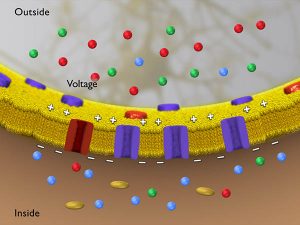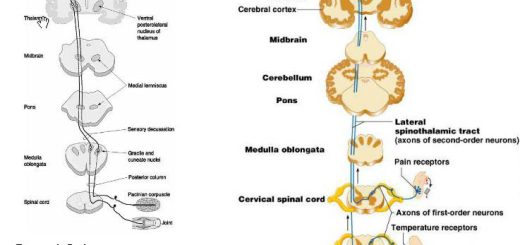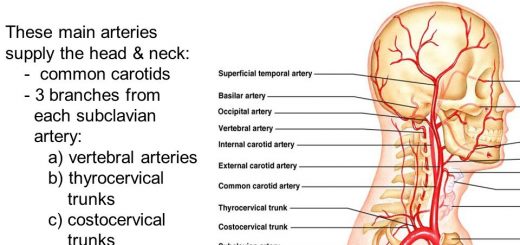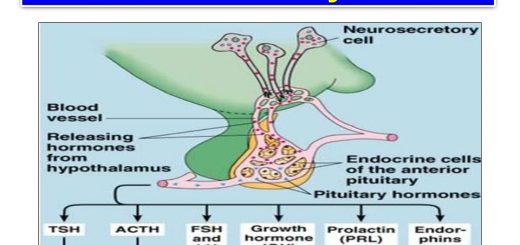Excitable Tissues and factors involved in production of RMP (Resting membrane potential)
The nervous system is the master controlling and communicating system of the body. This system is responsible for sending, receiving, and interpreting information from all parts of the body. It monitors and coordinates internal organs functions and responds to changes in the external environment.
Excitable Tissues
Nerve and muscle are called excitable tissues because they respond to stimuli (electrical, mechanical, or chemical) when they are excited. The nerve is an excitable tissue, that receives stimuli, processes them, and transmits signals to target tissues to integrate the functions of the whole body.
Muscle is an excitable tissue, which contracts in response to specific stimuli. Its function is to produce force and cause motion, either locomotion or movement within internal organs. A characteristic feature of an excitable tissue is the presence of resting membrane potential.
Resting membrane potential (RMP)
RMP is the potential difference created across the cell membrane by the metabolic processes of the fiber during rest.
Explanation
All the points on the outer surface of the membrane of a resting excitable tissue {nerve or muscle} are equipotential or isopotential i.e when 2 microelectrodes connected with a special voltmeter capable of measuring very small potentials are placed on the outer surface of a resting excitable tissue, no potential difference is recorded.
A peculiar characteristic of all living cells is that there is always an electric potential difference between the outer and inner surfaces of its membrane. If a microelectrode is inserted in a living cell and another electrode is applied to its outer surface, a current flows from outside to the inside of the fiber at rest, which shows that the outside of the fiber is positively charged relative to the inside i.e. the membrane is in the polarized state.
The RMP is about -70 millivolts (mv) in small nerve fibers and -90 mv in skeletal muscle, i.e the potential inside the nerve fiber for example is 70 mv more negative than the potential in the extracellular fluid on the outside of the nerve fiber.
Cause of RMP: RMP is caused by unequal distribution of electrically charged ions on both sides of the membrane with the prevalence of cations at the outer surface and anions at the inner surface
Factors of RMP involved in the production of RMP
Selective permeability across the cell membrane
1. The chief ions on the outer surface of the membrane are: Na+, Cl‾, HCO3‾, with a small amount of K+ and proteins.
The chief ions on the inner surface are: K+ and proteins with little amounts of Na+, Cl‾, and HCO3‾. The concentration of sodium ions on the outer surface of the membrane is about 15 times greater than that on the inner surface. The concentration of potassium ions on the inner surface is about 30 times greater than that on the outer surface.
Under resting conditions, the permeability of the membrane to various ions is a matter of selection. It contains leak channels, which allow certain ions to pass and severely prevent the others. Every channel is specifically selective for the passage of one or more ions.
The membrane is absolutely impermeable to proteins, which create negative charge at the inner surface of the membrane. The hydrated form of sodium ions: sodium channel is specifically selective for the passage of sodium ions. The hydrated form of potassium ions is smaller than the hydrated form of sodium ions; therefore the smaller hydrated potassium ions can pass easily through its leak channel.
The permeability of the membrane to K+ ions is 50-100 times more than its permeability to Na+ ions. In view of concentration gradient during rest, Na+ ions try to pass from extracellular to intracellular space and K+ ions do the reverse. In the resting state, the negative interior of the cell is due to a much greater diffusion of K+ out of the cell than Na+ diffusion into the cell. So, potassium ions play the most important role in generating the resting membrane potential.
The membrane is freely permeable to Cl‾, and HCO3‾, which diffuse from outside to inside of the membrane according to their concentration gradient. Migration of ions cannot continue because once the state of equilibrium is reached, the membrane becomes polarized i.e. with a positive charge at the outer surface of the membrane and a negative charge at the inner side.
The positive charge on the outer surface of the membrane repel the outflux of K+ ions and the negative charge inside the membrane prevent further passage of Cl‾ and HCO3‾ from the outer surface of the membrane to the inner surface. Any amount of Na+ leaked to the interior of the cell is out fluxed by an active transport mechanism (Na+– K+ pump).
Sodium-potassium pump
The most important active transport mechanism in the body is the Na+– K+ pump. It transports Sodium ions out of the cells to the exterior and this transport is coupled with the pumping of K+ ions in the opposite direction. The Na+– K+ pump is an active transport mechanism since it occurs uphill, i.e. against both concentration and electrochemical gradient.
There is a carrier protein formed of 2 separate globular proteins, this carrier protein has 3 receptor sites for binding Na+ ions towards the interior of the cell and has 2 receptor sites for K+ ions towards the outer surface. The inner part of this carrier protein has ATPase activity. Activation of ATPase occurs once the binding sites of the carrier protein (2 for K+ and 3 for Na+) are occupied with them. The energy obtained from the breakdown of ATP is used to extrude Na+ out and pumps K+ in.
Importance of sodium-potassium pump
- It maintains the Na+ and K+ concentration gradients across the cell membrane i.e. the fact that Na+– K+ pump moves three Na+ ions to the exterior for every two K+ ions to the interior means that a net of one positive charge is moved from the interior of the cell to the exterior for each cycle of the pump. This creates positivity outside the cell and negativity on the inside.
- The Na+– K+ pump is said to be electrogenic as it establishes a negative electrical potential inside the cells, which helps to transmit signals throughout the nervous system.
- Maintenance of the normal level of intracellular K+, which is necessary for protein metabolism.
- It keeps the osmotic equilibrium to maintain the cell volume. Without the function of this pump, most cells of the body would swell until they burst.
Peripheral nerve (Nerve trunk) types, structure, function & Response of neurons to injury
Nervous tissues function, structure, types of Neurons & Nervous fibers
Autonomic nervous system, Reflex action types & Autonomic ganglia function




